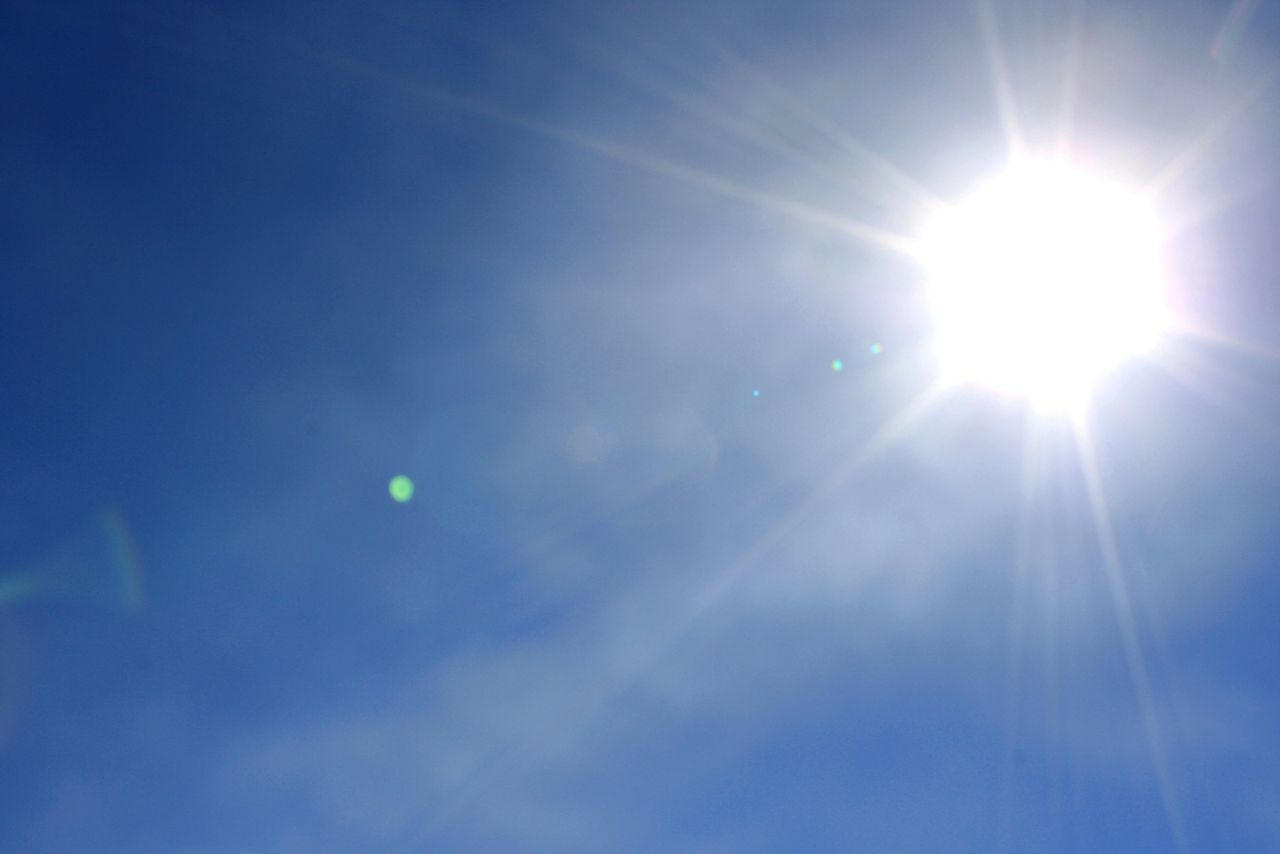Florida is known for sunshine. It is also the farthest south state in the United States, which means we are closer to the equator. That's why it is hot, and our sunshine is so strong.
The good things we get from the sun are light, warmth, photosynthesis in plants, and Vitamin D.
It does all these things by sending down radiation through the atmosphere that includes visible light, infrared, and ultraviolet or UV rays. We see the visible light; we feel the infrared, but we do not see or feel the UV. Only some ultraviolet rays are filtered out through the atmosphere before reaching us.
Too much sun is not good, mainly because of that ultraviolet radiation.
Too much UV radiation damages our skin. There is no such thing as a healthy tan. Any color change from our natural skin color is a sign of damage. And a sunburn means that the sun's radiation has killed most of the cells in your upper skin layer. Too much sun over years can cause our skin to age too soon. The sun causes wrinkles and loose skin to develop early and makes some people look older than they are.
Sunburns can lead to cancer. Suffering one or more blistering sunburns in childhood or adolescence more than doubles a person's chances of developing potentially-deadly melanoma cancer later in life. Non-melanoma skin cancers are also more likely after being sunburned. All of these cancers take many years to develop.
One in five North Americans will develop some form of skin cancer in their lifetime.
The bright sun can damage our eyes too. When we get sunburned, our eyes can be hurt at the same time, and we may not know it. Too much sun can cause inflammation of the eyes. If we don’t wear sunglasses in the bright sun, over time our eyes can develop cataracts. That is why many older people can’t see that well.
We don't need to be afraid of being in the sun, but we all can be safer about it. The goal is to reduce the amount of UV radiation that reaches our bodies.
First, we need to be knowledgeable about it. Clouds can block some of the UV rays, but do not block all. That's why we can get sunburned on a cloudy day. The air temperature does not impact the level of UV radiation. The strength is the same on a cool day as a warm day. But these factors will affect the level:
- Time of day -- the higher the sun in the sky, the higher the UV radiation level. Sixty percent of UV is received between 10 a.m. and 2 p.m. daily.
- Time of year -- UV radiation levels are highest during the summer months.
- Geographic location -- the sun's rays are strongest at the equator, where the sun is most directly overhead. The closer the equator, the higher the UV radiation levels. With Florida's low latitude, we get more UV radiation.
- UV rays are reflected off surfaces such as snow, water, sand, and concrete. This indirect UV radiation can significantly add to a person's overall exposure.
What can we do with this knowledge? First, find shade. This is one of the best ways to protect our eyes and skin. Remember that even on cloudy days, a lot of the sun's radiation comes through. Shade is especially important in the middle of the day, when the sun's UV or ultraviolet light is the strongest. If you use an umbrella at the beach, remember that sand reflects up to 25 percent of the UV radiation.
Another good way to stay safer is having more clothing. Hats protect the head, face and neck. Shirts protect our upper bodies. But remember you can still get a lot of sun even though a shirt.
So, sunscreen is another way to protect the skin. Keep reapplying, because it can wear off. And of course, where sunglasses as much as possible.
Always check out the Spectrum Bay News 9 Beach forecast at :29 past the hour or baynews9.com for the UV index of the day.



